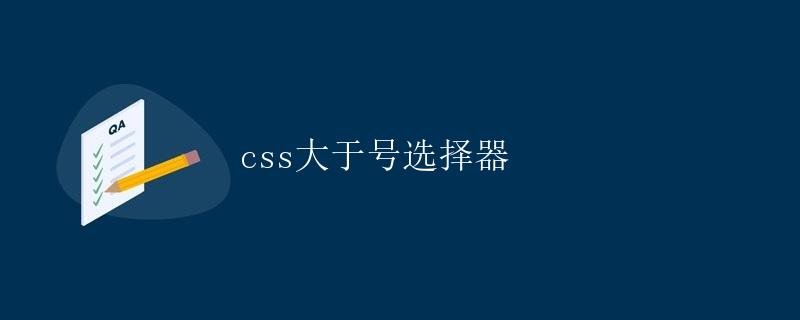CSS greater than sign selector
CSS Greater Than Selector

A > B, where A is the parent element and B is the child element.
The greater-than selector is typically used to select direct child elements, rather than descendant elements. This allows us to more precisely select the desired element and avoid selecting unnecessary child elements.
Syntax
The syntax of the greater-than selector is very simple. Simply separate the parent element and the child element with >.
parent > child {
attribute: value;
}
For example, if we want to select the direct child element <p> of the <div> element, we can write it like this:
div > p {
color: red;
}
Example
Let’s use a simple example to demonstrate the use of the greater-than selector. Suppose we have the following HTML structure:
<!DOCTYPE html>
<html>
<head>
<title>CSS Greater Than Selector Example</title>
<link rel="stylesheet" type="text/css" href="styles.css">
</head>
<body>
<div>
<p>First paragraph</p>
<span>First<span>span</span></span>
</div>
<p>Second paragraph</p>
</body>
</html>
We want to set the text color of the <p> element, which is a direct child of the <div> element, to red using CSS. We can add the following styles to styles.css:
div > p {
color: red;
}
This way, only the text color of the <p> element inside the <div> element will change to red, while the text color of the outer <p> element will not be affected.
Notes
When using the greater-than selector, please note the following:
- The greater-than selector only selects direct children, not descendant children. If you need to select all descendant elements, use the spacebar selector.
-
The greater-than selector has a minimal impact on performance because it limits the scope of the selector.
-
The greater-than selector is suitable for styling specific child elements, reducing unnecessary style redundancy.
Summary
Through this article, we’ve learned the usage and syntax of the greater-than selector in CSS. The greater-than selector helps us select elements more precisely and avoid selecting unnecessary child elements, making it an important selector in CSS style writing.